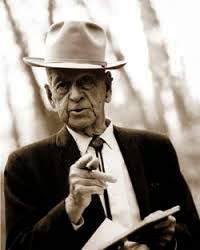Interpretive Talk & Presentation Technique
Hello everyone! so this pages I would like to share about Interpretive Talk & Presentation Technique which I hope that this going to help we to gain our knowledge together and future.
Let's we understand what is interpretation ?\
Definition:-
A communication process that forges emotional and intellectual connections between the interests of the audience and the meanings inherent to the resource.
The effective interpretive presentation is:-
- Successful as a catalyst an creating opportunity for the audience to form their own intellectual and emotional connections with meaning/significance.
- Appropriate for the audience and provides a clear focus for their connection with the resource by demonstrating the cohesive development of relevant idea and ideas, rather than relying primarily on recital of a chronological narrative or series of related facts.
TILDEN'S PRINCIPLE OF INTERPRETATION
Relate: Example: Sentul fruit is like a tennis ball.
Reveal: A secret is provocation but do not secretive until the end.
Provoke: Makes the audience curious with question, secret or mystery or something that able to attract their attention.
Whole: Tell the whole story.
Art: Images, colours, sounds, voice, touch, models etc.
Children's: Children's stories can be accepted by adults, but nor otherwise.
Interpretation Theme
1. What theme?
- The whole idea is described in a single sentence
2. Good Theme
- Can connect objects/places (tangibles) with the intent/ideas/emotions (intangibles)
For example:-
1. SIKAPAHLA innovation (tangibles) can avoid junk floating (intangibles)
2. Muafakat (tangibles) membawa berkat (intangibles)
3. KFC (tangibles): finger linkin' good
3. Avoiding audience to say "SO WHAT?"
Good Interpretation theme ..
1. Not only
- Specific, simple and compact
- Communicate ideas/complete information
- Uncovering the main purpose of presentation
- Contains only 1 key information
2. Should also
- Has a story
- Use active language
- Answer "SO WHAT?" question
- Provokes and attentions getters
- Convey positive information
Oral Interpretation
Example:
- Guided walk (interpretasi rentis)
- Costumed interpretation
- Storytelling
- Slide talk
- Puppetry
- Video
- Using live animal
Techniques
- Humor
- Question - Do you know?
Interpretive Communication Structure
1. Pow - Attract the audience attention with provocation start
2. Body - Give example of the message (relate)
3. Bridge - Give the answer to the last provocation (reveal). What was that said? What does it mean?
4. Conclusion - Give a conclusion to the presentation that was made - there must be a "call for action"- Give the answer to the a question "SO WHAT?"
Interpretive communication plan
1. Identify the audience - background, ability, culture, social level etc. (Make sure the messages are relevant and meaningful to the audience)
2. Theme - Unique and interesting
3. Objective assessment - In a format that can be evaluated
4. Preparation area - Location, period, group size
5. Programme guidelines - The structure, the introduction of the topic, outline, conclusion
Interpretive Communication Method
1. Preparation stage - Came early, dressed, always ready and in confidence
2. The first moment - The first 30 seconds are the most critical to create a friendly atmosphere, avoid any obstacles, smiles, eye-contact, casual, not too formal
3. Start the communication - Do not cram, do not hide the notes, body language, use humor, questions and tools to create the mood
4. Voice - Clear, intonation, pause, emphasis on narrative situation "warn if something important will happen"
Interpretive Communication Tips
1. Body Language - Mimic face, feeling, walking with reason, avoid shaking or hiding hands/legs
2. Active Verbs - Avoid "fillers" (eeemmmm, eerrr, apa?) sentence repetition, apologise
3. Probs and aids - Something interesting but you can control it
4. Humor - Must be relevant, easily caught, not offend, do not make the audience as a joke - if you need, make yourself a target
5. Questioning - Focus/process/evaluative/rhetorical
Questioning
1. Focus Questions - Basic: Who? What? Where?/What do you know about warming
2. Process Questions - Audience need to give a wide answer and think / What does it mean?
3. Evaluative Questions - Audience's view and opinion, give them to judge and make an evaluation / Why do human always think that?
4. Rhetoric Questions - No need answers from the audience, let them think what is the answers / if global warming is happening, what will happen to mankind?
APPLY INTERPRETIVE PRESENTATION TOOL FOR DIFFERENT AUDIENCE AND RESOUCES
1, Interpretive slide talk
2. Storytelling
3. Guide Interpretation
4. Non-verbal interpretation




Comments
Post a Comment